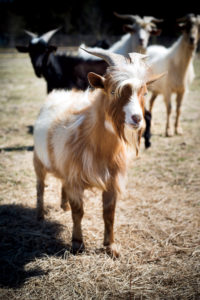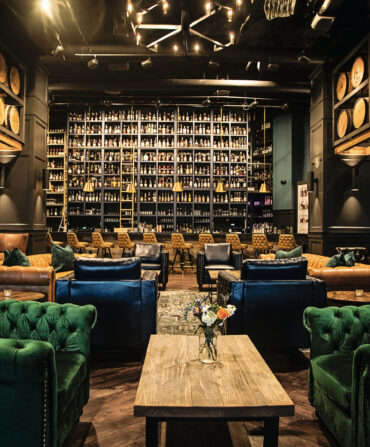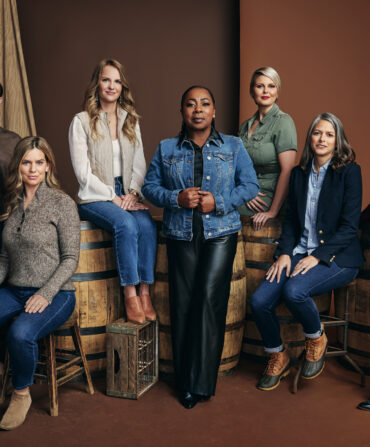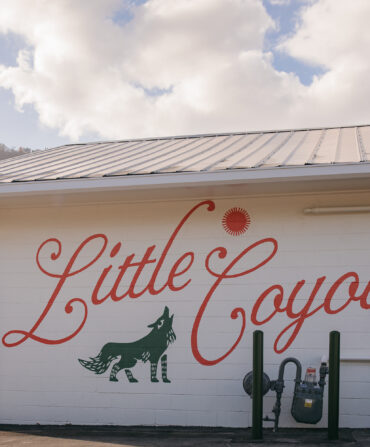Food & Drink
Revival Foods: Land of the Lost
How one farmer has traveled the South to find and save the disappearing breeds of our past—one goat, sheep, cow, pig, and goose at a time
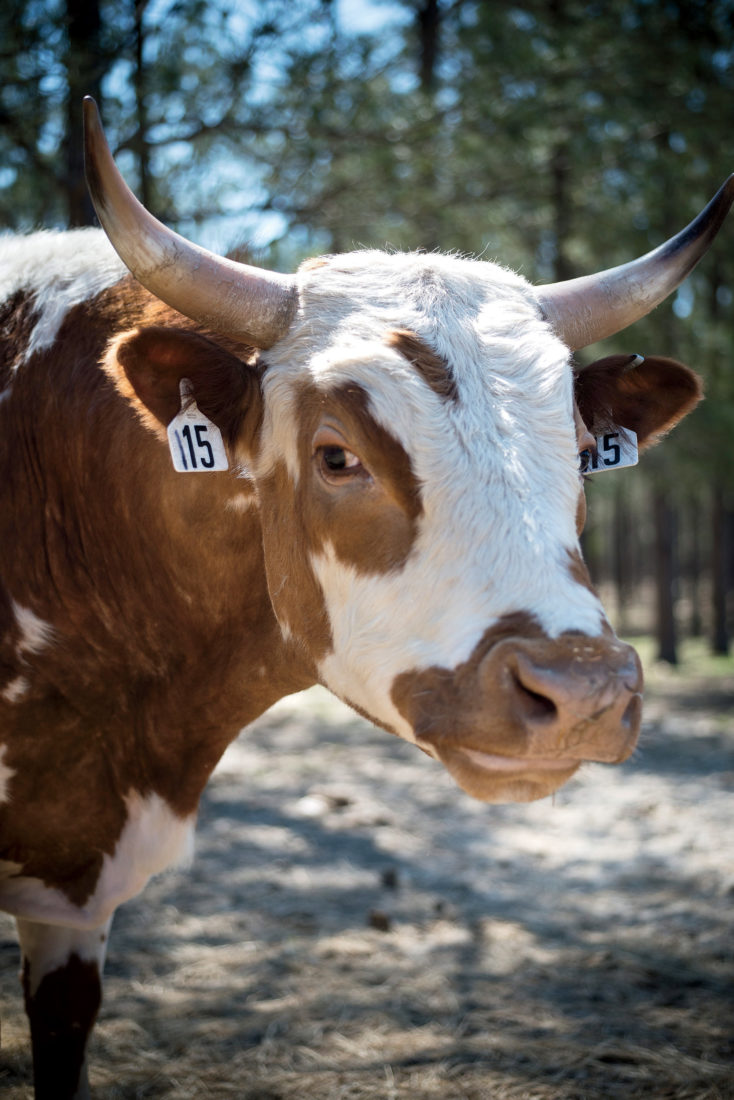
Photo: Imke Lass
To Bradley Taylor, the eight fat burgers sizzling on a brow-searing kettle grill before us are rich with meaning. He lifted the recipe from Sean Brock, the Charleston, South Carolina–based chef who formulates the bacon cheeseburger at his restaurant Husk by grinding Southland-sourced bacon and beef together. But Taylor, a tattooed Georgia rancher, gives the recipe his own spin. His ground beef comes from an endangered breed of Southern cattle, the Pineywoods, and he blends in guanciale, a sweet bacon carved from the ample jowls of the Ossabaw, an equally endangered hog that Spanish explorers deposited as a food source on an eponymous Georgia island four hundred years ago. The guanciale adds tasty fat to the lean Pineywoods beef.
“Right here at this moment is the only time that this meal exists,” Taylor says, “and that’s kind of what got me into this whole thing. We live in this age of Amazon Prime, and being able to have everything you want overnight. What is it—in this broken industrial commodity system of ours—that you really have to work for, that the only way you can even get it is by producing it yourself, or going to the place that it’s made?”
The burgers are slathered with Lowcountry Gouda, found just up the road at Flat Creek Lodge Dairy and Farm by Taylor’s girlfriend and partner, Catherine Compton, and they’re flat-out delicious: tender but firmer than typical ground chuck, with a woody, nutty flavor somewhat like venison, minus the gaminess. This results from an animal lifestyle that includes miles of daily foraging for living grass, acorns, walnuts, muscadines, and snakes—one of the hogs’ favorites. The burgers are also a metaphor of sorts for Taylor’s business venture/crusade: to prove the radical notion that you can profit by letting Southern farmland and Southern-adapted livestock mostly take care of themselves. And that the best way to save these creatures from extinction is to eat them.
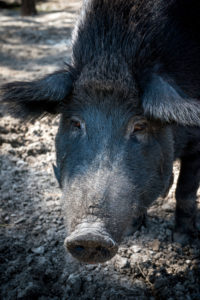
Photo: Imke Lass
A Choctaw hog.
Taylor is hardly the first Southerner to dabble in heritage livestock breeds, but his LJ Woods Farm—on 680 acres outside Sylvania, Georgia, between Savannah and Augusta—stands out. One reason is the number of rare breeds he’s raising, about a dozen. Another is the unlikely career track that brought him here. He took his headlong, Noah–meets–Dr. Dolittle plunge into farming just two years ago, after a former life as a software engineer. “I’ve sort of dived down the rabbit hole,” he jokes. “But the bottom line is that the breeds I have here can thrive and be healthy with little or no intervention. In a world where we’re saying, steroids, antibiotics, chemical fertilizers, herbicides and pesticides…we don’t want to eat that stuff, and we don’t want it dumped into our soil and water, my thinking is, let’s start with the animals that require the least number of inputs to live happily. Let’s find the ones most adapted to our area.”
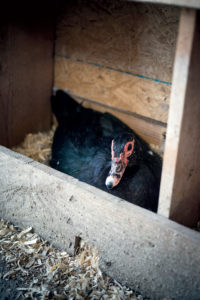
Photo: Imke Lass
One of Bradley Taylor’s low-maintenance Muscovy ducks.
In a short time, he’s forged alliances with some of the South’s best chefs. “We all want to not only see a great-tasting piece of meat on the plate,” says Craig Deihl, the James Beard Award nominee from Charleston’s Cypress, “we want to see the farmer succeed. Some would say those animals aren’t worth saving because there’s not as much meat on them. Well, is it, I’m working harder to raise animals that aren’t adapted to this environment, or I’m working smarter, because my animals are working the land and I’m simply providing the husbandry and the forestry—taking care of what will allow the animals to do what they do naturally?”
Taylor has yet to turn a profit, he readily admits, and success is far from guaranteed. His animals are typically smaller than other breeds, and because they walk constantly and forage on natural food, they tend to burn off what they eat and thus grow at a slow, natural pace—the antithesis of feedlot herds. For livestock to live off the land also requires a much larger area, as I soon find out.
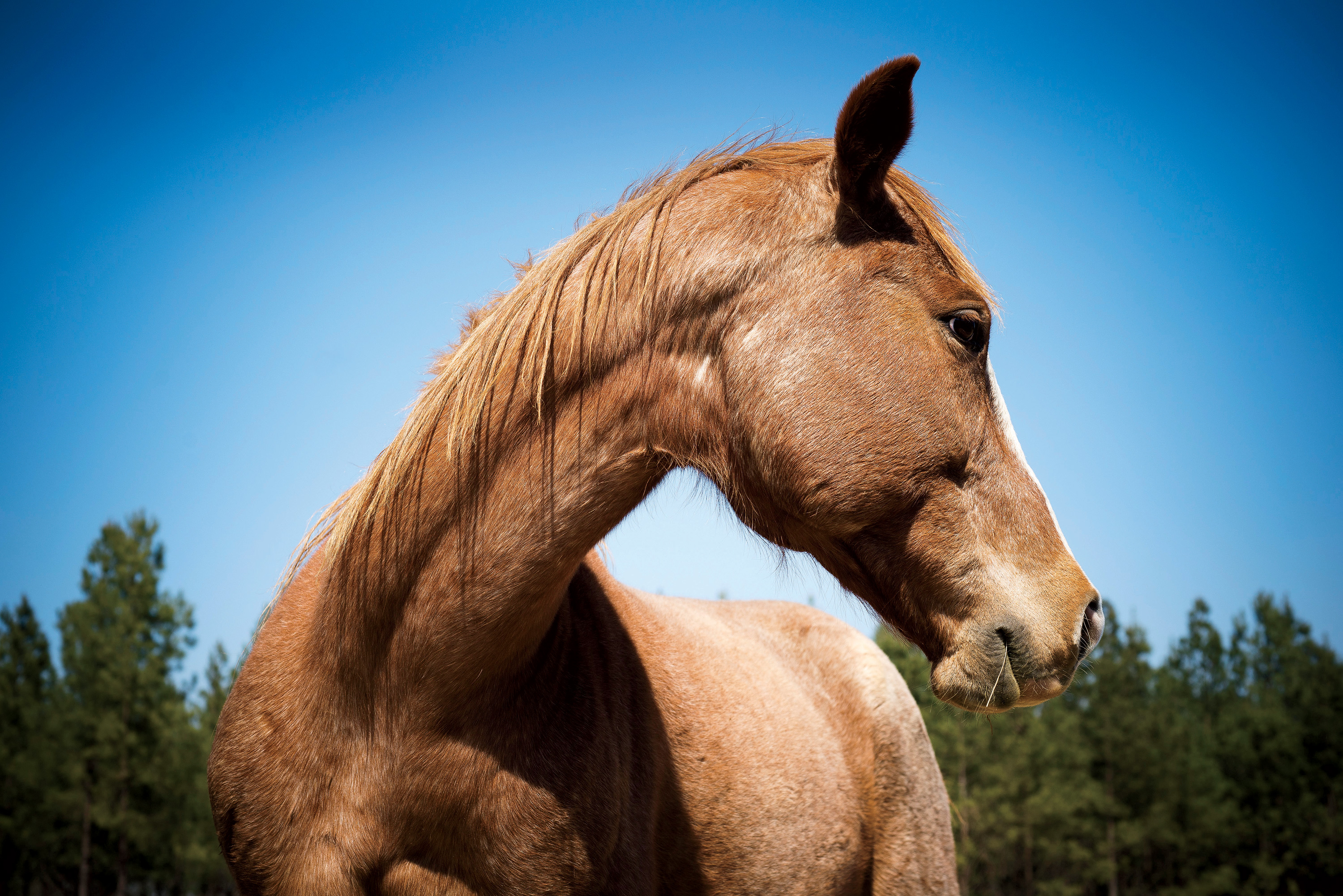
Photo: Imke Lass
A Marsh Tacky horse.
On this sultry afternoon, Taylor has invited my wife, my two children, and me to spend the day at his farm with him, Compton, and her eight-year-old son, Cayden. At first glance, LJ Woods, named after Taylor’s late mother, Linda Jean, looks a lot like other rural parcels spread across these prehistoric Lowcountry dune lines, but a closer look reveals big differences. Hardly any of his land is classic open grazing pasture. Most of his vast menagerie of rare cattle, sheep, goats, hogs, chickens, ducks, and geese forage among deer, coyotes, and wild turkeys beneath oaks and loblollies, meandering streams, and jarring clear-cuts carved out before Taylor bought the land.
The children clamber aboard Taylor’s golf cart, and we careen down the rabbit hole. Our first stop is an open field that holds several muscular Marsh Tacky horses, a smaller breed that the Spanish introduced to South Carolina centuries ago. Once plentiful in the Lowcountry, by the 1980s their numbers had dwindled to around a hundred Carolina purebreds. The horses have seen a comeback lately, though, thanks to their ability to work as hunting mounts through sweltering heat and humidity. Taylor assures my daughter that they will not be eaten. “My plan is to use them to give farm tours, to work the cattle, and maybe for some limited hunting.”
Next, we arrive at a pen full of geese and chickens with a grassy run shared by diminutive goats, a few muttering, mottled ducks, and four black-and-white fur-ball puppies, as cute as baby pandas, which smother my seven-year-old daughter in slobbery kisses. She’s just as delighted when Taylor hands her a hollering baby Lowcountry goat, an endangered, heat-and-parasite-tolerant, Spanish-descended creature with hooves well suited to damp pocosin bottomland. “They were found living feral on an island near Charleston,” Taylor says. “The ducks are Muscovies. They’re fairly common but are basically maintenance free since they forage in the pasture.” The burly pups are Karakachans, a livestock-herding breed whose roots run back to Balkan Greek shepherds. They’re well on their way to a hundred pounds but gently romp with the ducks and goats and guard against coyotes. “They’re actually submissive to the goats,” he says. “When the kids are born, they help the moms clean them up.”
An adjacent run holds a hefty flock of gray-and-white Cotton Patch geese, small, colonial-era birds that long endeared themselves to cotton farmers by eating nearly every weed that popped up in the broiling fields. They waddle among an assemblage of beautifully plumed brown, black, purple, and red English chickens called Games. For centuries, the roosters were bred for cockfighting. “A lot of the old-timey Southern farmers out here—straw hats, overalls, and brogans—keep Games,” Taylor says. “Game hens also like to sit on the duck eggs, so they’re really handy. They’re kind of like chicken au pairs.”
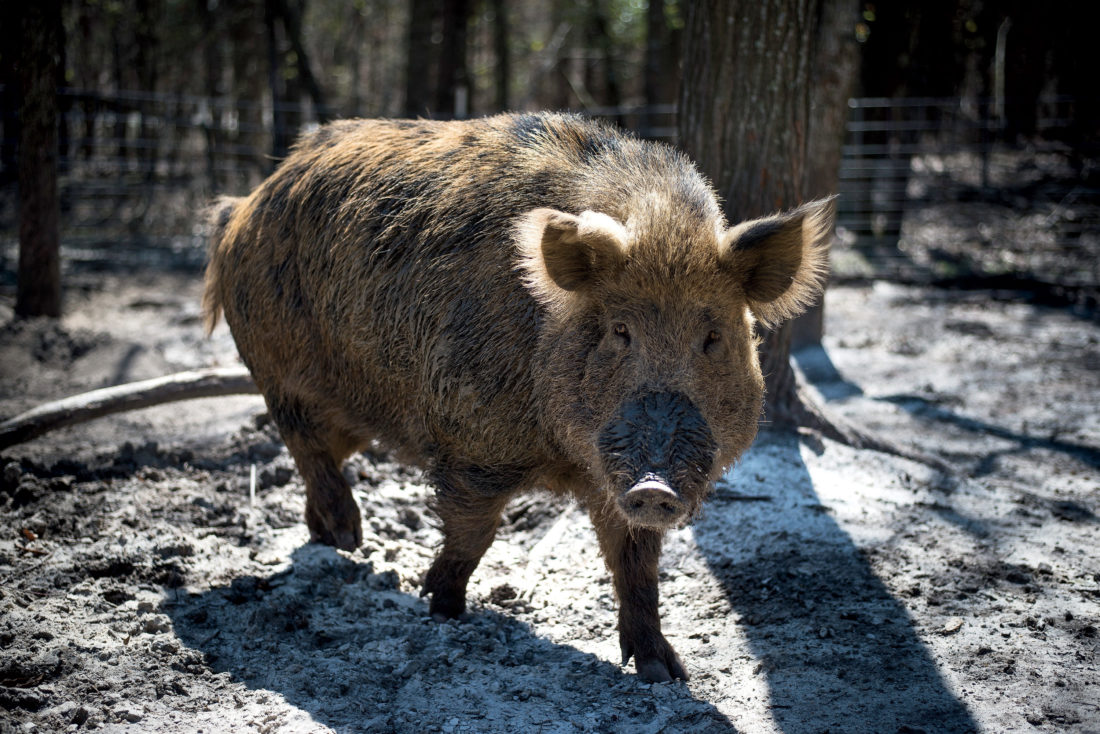
Photo: Imke Lass
An Ossabaw hog.
This existence is something Taylor never imagined as a geography undergrad at the University of Georgia in the early nineties. He came of age in Sandy Springs, an Atlanta suburb, when many Atlanta backyards still abutted huge swaths of forest and a BB-gun-toting kid could live like a junior Mark Trail. As it happened, Taylor’s home actually abutted Lost Forest, 130 acres near the Chattahoochee River owned by Mark Trail cartoonist Edward Dodd. At North Springs High, Taylor became a skateboarding punk rocker. “If somebody had told me on the night I went to see Nirvana at the 40 Watt that I’d one day own a farm, I’d have said, ‘That’s completely insane,’” he says, laughing. “I also might as well admit it now: I was a vegetarian for seventeen years. I’d make chicken-fried tofu.”
After graduating, several years in the geographical mapping field led Taylor and his Carolina-bred wife into a lucrative five-year resettlement in Redlands, California, outside of L.A. But over time, he grew homesick, seeking out Southern food and finding solace in Lynyrd Skynyrd and the Allman Brothers. “I’d listen to the extended version of ‘Whipping Post’ on vinyl next to my pool, thinking, ‘This is great, but something’s missing.’”
He and his wife returned to the South in 2004, moving to Savannah when he learned he could make solid money implementing open-source software for businesses. Once settled, he bought a German shorthaired pointer, named her Julep, and, though he’d never ridden a horse, became obsessed with field trials. Placing second at the amateur national pointing dog championships begat the purchase of this big slice of Sylvania hunting land, and an ongoing dialogue with the American Livestock Breeds Conservancy, which focuses on saving heritage breeds. “I said, ‘I’m thirty-eight. What can I do, and keep my day job? Well, I’m gonna launch a heritage farm start-up.’ It’s also, unfortunately, well understood that such entrepreneurism causes marital issues.”
After his divorce, Taylor commenced a fanatical hunt for heirloom animals and founded a company called Revival Foods to promote their breeding and consumption. He scoured the Internet for books, and called on farmers along Southeastern back roads, often stopping at a house simply because he spotted a goat with curved horns that might suggest an heirloom strain. Eventually, he tapped into a loose, somewhat secretive confederacy whose pre–Civil War ancestors weren’t planters, but rather Scotch-Irish “yeoman cracker farmers,” as Taylor calls them, or West African–descended cattle drovers. Aided by Marsh Tackies and Catahoula Leopard dogs (which Taylor also now owns), these antebellum cowboys ran huge herds of cattle, goats, sheep, and hogs through the pine barren wilderness that once stretched from Manteo, North Carolina, to Orlando to New Orleans to Houston.
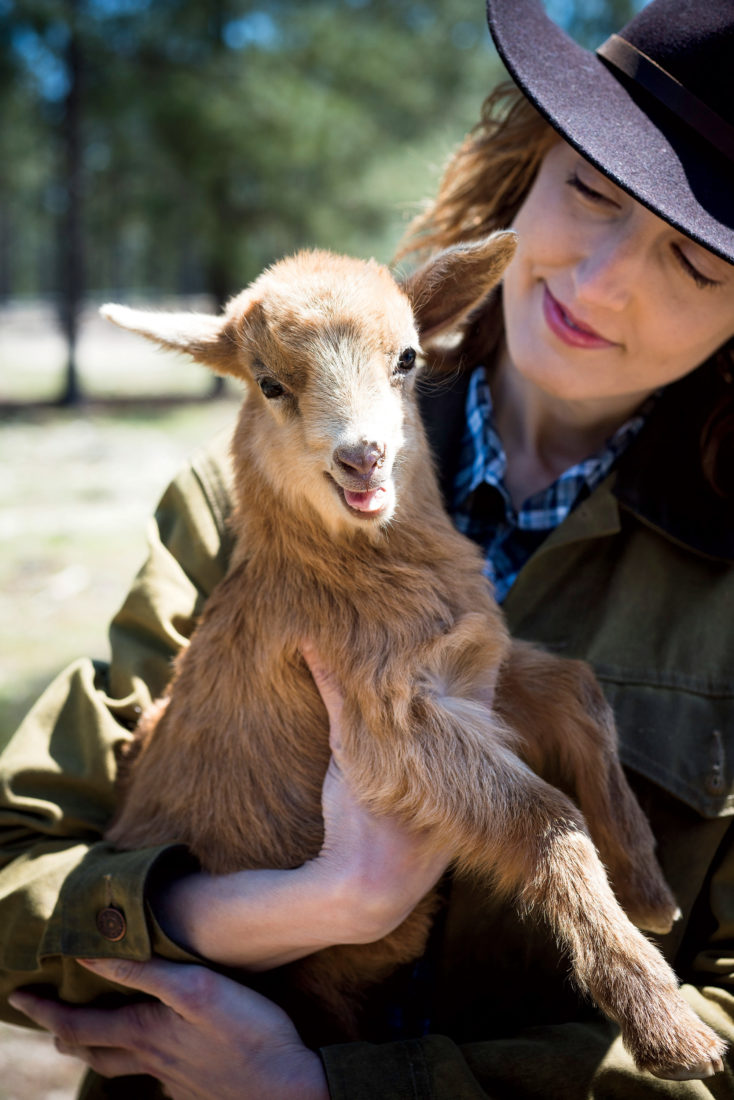
Photo: Imke Lass
Catherine Compton with a Baylis goat.
“These farmers who’ve sold me livestock, they’re such good people,” Taylor says. “I’ll get a call: ‘If you want these hogs, come get ’em or they’re going to the butcher.’ To others, these animals are part of their family, a link to a forgotten history. Most only operate face to face, no e-mail, and they’re cash only. One man I bought cattle from wouldn’t accept fifty-dollar bills because they had Grant’s face on them.”
One day in 2012, Taylor found himself captivated by a Savannah-based TEDx talk given by Compton, a nutritionist, a cofounder of Slow Food Savannah, and a walk-on member of Clemson’s 1999 basketball team who had built working relationships with other heritage farmers and chefs. Taylor asked her if she might be interested in helping him introduce Pineywoods beef to potential customers. “The next thing I know,” she says, “we’re traveling on a Choctaw hog–calling trip to Petal, Mississippi. Three days later, we met Justin B. Pitts. We stood out there for three hours, slapping bugs and talking to him about everything from his animals to Southern history to how the Kardashians were destroying America.”
“Justin’s six-four and weighs probably two ninety,” says Taylor about the forty-six-year-old Mississippi farmer, who has helped keep the flame of heirloom livestock alive. “He lives simultaneously in the nineteenth and the twenty-first centuries. We do too, but he’s a whole ’nother level; just this force of raw, primal Southern-ness.”
“We went back to visit Justin with Cayden to get some bulls,” Compton says. “He wanted Cayden to help him get some ducks into the chicken house, and Cayden was only just out of the suburbs. Justin said to him, ‘You did a pretty good job—for a city girl.’ Then he said, ‘Boy, I think you need a rooster to wake you up in the morning, and you need some Game hens, too.’ That’s how we got our first ones.”
Gradually, Pitts sold Taylor much of his stock. “Bradley just showed up one day,” Pitts says when I later contact him. “He wasn’t a farmer, just a guy with some land. Said he wanted to buy some starter animals from me. He was lost in the high weeds, but I felt there was a genuineness to him. I’ve been fooled before—one guy I dealt with in Georgia was more useless than tits on a boar hog—but I gambled on Bradley, and I think it was a hand well played. He wound up with damn near everything I had.”
Even with the know-how they’ve gleaned from Pitts and others, Taylor and Compton know the logistical forces they’re up against. It’s hard to make a living in livestock, especially if you’re determined to avoid raising unnaturally fattened, feedlot-engineered animals. Taylor cites a grim statistic a local banker revealed to him. In the mid-1980s, Screven County (where LJ Woods is located) had eight hundred family farms. Today there are around forty. “The margins are so small,” Taylor says. “That’s why concentrated animal feeding farms were born, where they’re being funneled bioengineered corn and standing in their own poop.”
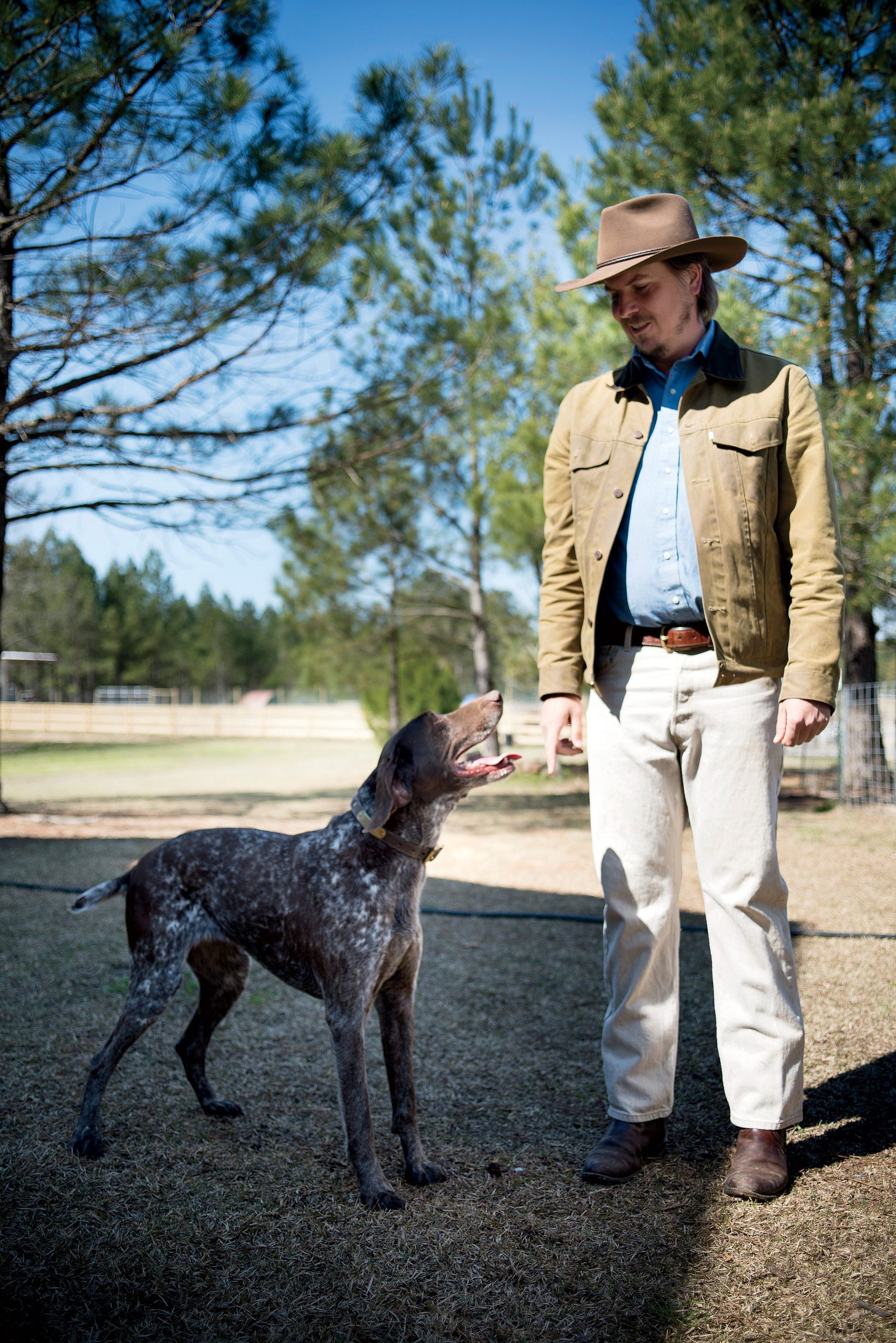
Photo: Imke Lass
Taylor and his pointer, Julep.
Despite these economic headwinds, Taylor seeks to establish a conservation-based model that reduces a farmer’s costs enough to compete with factory farms. While Compton preaches the dietary benefits of Pineywoods beef and Ossabaw pork, which are loaded with healthy omega-3 fatty acids, Taylor works with clients and obsesses over farming problems with the mind of a programmer: How many animals can an acre of land support? How long does it take an acre of grazed habitat to recover? “If we can figure out this model, so that other farmers can do this and raise these heritage breeds,” Compton says, “that’s just so huge.”
They’re not the only ones with a stake in the farm’s success. “Bradley sees the very big picture,” says Sean Brock. “The Ossabaw hog, it makes the best country ham and charcuterie imaginable. Pineywoods cattle, we’re doing trials at the restaurant. The most delicious and tender are the younger animals, and that’s good news for people who want to breed them, because the older an animal gets, the more you have to feed it. The other thing is, these animals are compatible with the terroir of the region—the climate, the history, the landscape. You can’t taste the Lowcountry on a corn-fed Texas cow.”
Our golf-cart entourage arrives at a semiforested enclosure that holds a flock of bare-faced Gulf Coast sheep, sharing space with small heifers with beautifully striped horns and a strapping yellow bull. Only four or five hundred of these Pineywoods cattle exist. Several newborn calves roam this recently thinned pine forest with their mothers, one of whom not long ago returned to the farm after spending months in the woods contentedly foraging, wild and free.
These animals and this habitat, called silvopasture, demonstrate the elegant natural balance Taylor hopes to maintain. “This partial clearing mimics the old longleaf habitat—keep enough pines to give shade, but allow sunlight through to support the growth of forage so the cows can graze,” he explains. “Then you have a border edge for wildlife and other forage. The animals eat muscadine vines, oak leaves, acorns, pecans, even pine needles. In the swampy areas, they eat this stuff called canebrake, and they’ll manage your timberland—sweet gums and hardwood saplings you’d normally have to kill with fire or herbicides. Their manure also creates soil amendments—fertilizer.
“In the end,” Taylor continues, carefully petting a yellow heifer between the horns, “I don’t want to see these animals go to some commodities market, where the story of the breed and all that we’re trying to do here is lost. I want them ending up on the plate with someone who’s going to do them justice—with someone who can say, Let me tell you about this cow. This cow goes back over a hundred years to a man by the name of Print Carter, who, after he got out of the Confederate Army, swam a small herd of native cows across the Pearl River and into Mississippi, where the next six generations of his family raised their descendants. And somehow a computer nerd from Atlanta got ahold of them, and is trying to sell them to James Beard–nominated chefs in Charleston.
“I really don’t know if this is going to work,” he says with a smile. “But I have to try.”


